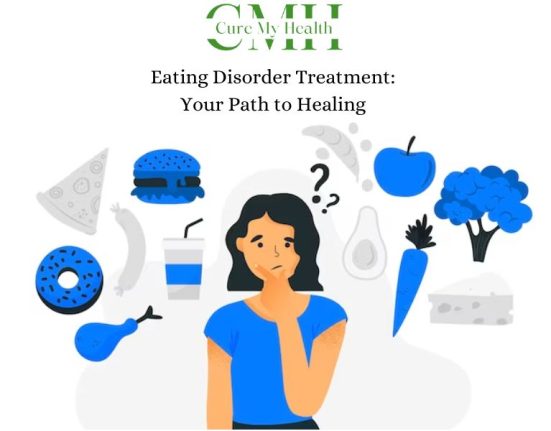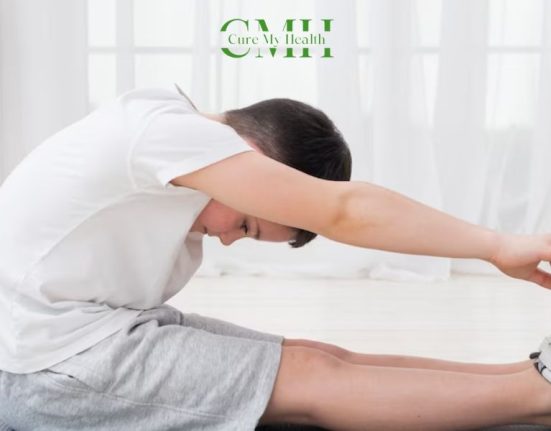Introduction
Yes, some foods can help fight pain due to their anti-inflammatory properties. Chronic pain is often associated with inflammation in the body, and certain foods can help reduce this inflammation.
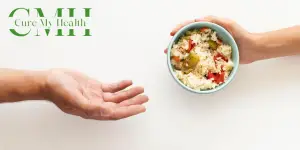
Some examples of anti-inflammatory foods that may help fight pain include:
- Fatty fish: Fatty fish like salmon, tuna, and sardines are rich in omega-3 fatty acids, which can help reduce inflammation in the body.

- Berries: Berries like strawberries, blueberries, and raspberries are rich in antioxidants, which can help reduce inflammation and fight pain.

- Ginger: Ginger contains compounds that have anti-inflammatory properties, and studies have shown that ginger can help reduce pain and inflammation in people with osteoarthritis.
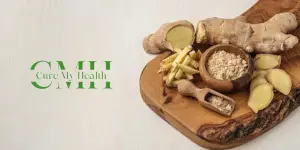
- Turmeric: Turmeric contains curcumin, a compound with strong anti-inflammatory properties. Studies have shown that curcumin can help reduce pain and inflammation in people with arthritis.

- Leafy greens: Leafy greens like spinach and kale are rich in antioxidants and other anti-inflammatory compounds that can help fight pain.

- Nuts: Nuts like almonds and walnuts are rich in omega-3 fatty acids and antioxidants, which can help reduce inflammation and fight pain.
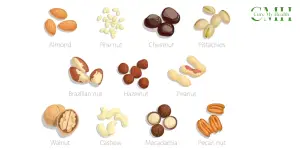
It’s important to note that while these foods may help fight pain, they are not a substitute for medical treatment. If you’re experiencing chronic pain, it’s important to talk to your doctor to determine the best course of treatment for your specific condition.
The relationship between food and pain is complex, as there are many factors that can contribute to pain, including genetics, lifestyle, and underlying health conditions. However, certain foods can either worsen or alleviate pain.
Foods high in sugar, saturated fats, and processed ingredients have been linked to increased inflammation, which can exacerbate pain. In contrast, foods that are high in antioxidants, omega-3 fatty acids, and anti-inflammatory compounds have been shown to help reduce inflammation and alleviate pain.
Additionally, maintaining a healthy weight through a balanced diet can help reduce the strain on joints and muscles, which can also help alleviate pain.
It’s important to note that while certain foods can help alleviate pain, they should not be used as a sole treatment for chronic or severe pain. If you’re experiencing persistent or severe pain, it’s important to consult with a healthcare professional to determine the underlying cause and develop a comprehensive treatment plan.
How food helps to recover post-workout pain.
Refueling glycogen stores: During exercise, your body uses up its glycogen stores, which are the main source of energy for high-intensity exercise. Eating carbohydrates after a workout helps replenish these stores, which can help you recover faster and have more energy for your next workout.

Repairing and building muscles: Exercise causes microscopic damage to muscle fibers, which then need to be repaired and rebuilt. Eating protein after a workout provides your body with the building blocks it needs to repair and rebuild muscle tissue.
Reducing muscle soreness: Eating after a workout can help reduce muscle soreness by providing your body with the nutrients it needs to repair damaged tissue and reduce inflammation.
Improving recovery: Eating after a workout can help improve recovery time by providing your body with the nutrients it needs to repair and rebuild tissue, reduce inflammation, and restore energy levels.
Boosting immune function: Intense exercise can temporarily weaken your immune system, making you more susceptible to illness. Eating after a workout can help boost immune function by providing your body with the nutrients it needs to maintain a healthy immune system.
Overall, eating after a workout is important for helping your body recover and preparing it for your next workout. It’s recommended to eat a meal or snack that includes carbohydrates and protein within 30 minutes to an hour after exercising.
Food can help with broken bone pain in several ways:
Providing the building blocks for bone healing: Eating foods that are high in calcium, phosphorus, magnesium, vitamin D, and vitamin K can help provide the building blocks your body needs to repair and rebuild bone tissue.
Reducing inflammation: Broken bones can cause inflammation, which can exacerbate pain. Eating foods that are high in anti-inflammatory compounds, such as omega-3 fatty acids, can help reduce inflammation and alleviate pain.
Supporting immune function: Broken bones can increase the risk of infection, as the body’s immune system is weakened during the healing process. Eating foods that are high in vitamin C and other immune-supporting nutrients can help support immune function and reduce the risk of infection.
Maintaining a healthy weight: Being overweight can put additional stress on broken bones, which can exacerbate pain. Eating a balanced diet and maintaining a healthy weight can help reduce the strain on broken bones and alleviate pain.
Improving mood: Dealing with broken bone pain can be stressful and affect your mood. Eating foods that are high in mood-boosting nutrients, such as omega-3 fatty acids and B vitamins, can help improve your mood and reduce stress.
Overall, a balanced diet that includes a variety of nutrient-rich foods can help support the healing process, reduce inflammation, and alleviate pain associated with broken bones. However, it’s important to consult with a healthcare professional to determine the appropriate treatment plan for your specific injury.
Food can help reduce pregnancy pain in several ways:
Reducing inflammation: During pregnancy, the body undergoes various changes that can cause inflammation, which can exacerbate pain. Eating foods that are high in anti-inflammatory compounds, such as omega-3 fatty acids and antioxidants, can help reduce inflammation and alleviate pain.
Supporting a healthy weight: Pregnancy can cause weight gain, which can put additional stress on the body and exacerbate pain. Eating a balanced diet and maintaining a healthy weight can help reduce the strain on the body and alleviate pain.
Promoting healthy digestion: Pregnancy can cause digestive issues, such as constipation and bloating, which can exacerbate pain. Eating foods that are high in fibre, such as fruits, vegetables, and whole grains, can help promote healthy digestion and alleviate pain.
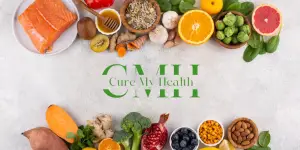
Supporting hormonal balance: During pregnancy, hormones fluctuate, which can cause various aches and pains. Eating foods that are high in nutrients that support hormonal balance, such as vitamin B6, magnesium, and zinc, can help alleviate pain.
Providing energy: Pregnancy can cause fatigue, which can make pain feel worse. Eating foods that provide sustained energy, such as complex carbohydrates and protein, can help reduce fatigue and alleviate pain.
Overall, a balanced diet that includes a variety of nutrient-rich foods can help reduce inflammation, support a healthy weight, promote healthy digestion, support hormonal balance, and provide energy, all of which can help alleviate pregnancy pain. However, it’s important to consult with a healthcare professional to determine the appropriate treatment plan for your specific pain during pregnancy.
Here are some specific foods that can help reduce pregnancy pain:

Fruits and vegetables: Fruits and vegetables are high in antioxidants and anti-inflammatory compounds, which can help reduce inflammation and alleviate pain. Aim for a variety of colourful fruits and vegetables to get a wide range of nutrients.
Omega-3 rich foods: Omega-3 fatty acids have anti-inflammatory properties and can help reduce pain. Include foods that are rich in omega-3s, such as fatty fish (e.g., salmon, sardines), chia seeds, flaxseeds, and walnuts.
Calcium-rich foods: Calcium is essential for healthy bones and can help reduce pregnancy-related pain. Include foods that are rich in calcium, such as dairy products, leafy greens (e.g., kale, collard greens), and fortified plant milks.
Magnesium-rich foods: Magnesium can help reduce muscle tension and alleviate pain. Include foods that are rich in magnesium, such as nuts and seeds (e.g., almonds, pumpkin seeds), legumes (e.g., black beans, chickpeas), and whole grains (e.g., brown rice, quinoa).
Ginger: Ginger has anti-inflammatory properties and can help alleviate nausea and pain. Try adding fresh ginger to smoothies or tea, or using it in cooking.
Water: Staying hydrated is important for reducing pregnancy-related pain. Aim to drink at least eight glasses of water per day, and include other hydrating foods, such as soups and fruits with high water content (e.g., watermelon, cantaloupe).
In conclusion, food can play an important role in reducing pain in a variety of contexts, such as post-workout soreness, broken bones, and pregnancy-related discomfort. Nutrient-rich foods can provide the building blocks needed for healing and repair, reduce inflammation, support a healthy weight, and promote healthy digestion and immune function. Specific foods, such as fruits and vegetables, omega-3 rich foods, calcium and magnesium-rich foods, ginger, and water, have been shown to be particularly effective in reducing pain. However, it’s important to consult with a healthcare professional to determine the appropriate treatment plan for your specific pain and to ensure that you are getting the proper nutrition and support for optimal health and well-being.









